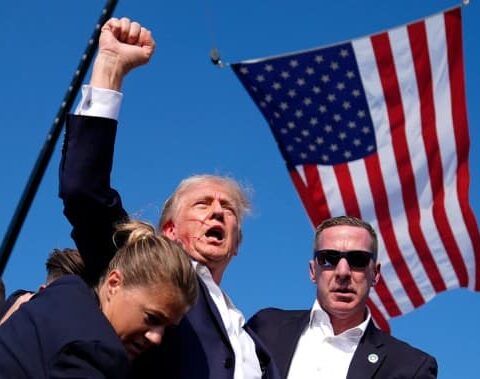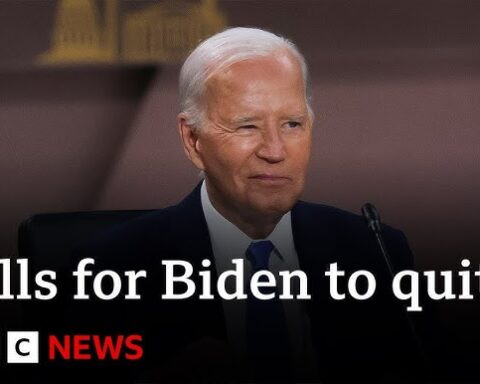It is interesting, as the tensions and provocations between North Korea, the US and China continue, that it wasn’t that long ago when South and North Korea appeared to be moving mutually towards more cooperation and friendlier relations.
Things, it appeared, could’ve been very different.
Before South Korea’s more conservative presidents decided to break ties with North Korea (from around 2008) their more liberal, progressive predecessors – Kim Dae-jung and Roh Moo-hyun – had been seeking a peaceful engagement and rapprochement with the north.
This approach was called the “sunshine policy.”
The somewhat poetic and optimistic-sounding name came from an ancient Greek story in which the wind and the sun competed with one another to remove a man’s cloak. According to the fable, regardless of how strongly or persistently the wind blew at him, the man simply wrapped his cloak more tightly around himself. On the other hand, when the sun shone, it was the warmth that finally made him take his cloak off.
The ‘Sunshine Policy’, embarked on by liberal South Korean leaders from around 1998, was configured to forbid any military provocations from the north, while at the same time fostering more economic engagement and assuring the North Korean regime of there being no agenda to assimilate north to south.
Felix Abt, author of the book A Capitalist in North Korea: My Seven Years in the Hermit Kingdom, wrote a particularly interesting piece a year or so ago on this Sunshine period, which he presents as having been ‘a period of unprecedented cooperation between the two Koreas’.
He wrote in June last year for The Diplomat, highlighting how this programme had involved ‘the set-up of a wide cooperative framework that included infrastructure development, such as the restoration and construction of roads and railways, economic assistance, as well as a wide variety of inter-Korean business ventures.’
The policy both sought to improve living standards in the deprived North and to increase its engagement with the prosperous South. Over 40 different agreements were made between North and South Korea during this more optimistic period, with organisations and businesses in South Korea being encouraged by the government to interact with the pariah state. The image below shows Kim Jong-II and South Korea’s Kim Dae-jung at a summit in 2000 (AP Photo/Yonhap, Pool).

Abt wrote, ‘South Korean firms became involved in the North in mining, agriculture, tourism, car manufacturing, and textile production. The most outstanding achievement of Kim Dae-jung’s policy was an industrial park in the North Korean city of Kaesong, where more than a hundred South Korean companies employed more than 50,000 North Korean workers…’
He continues, ‘During the Sunshine years, not only more and more business people from the South came to the North. NGOs, artists, religious groups, and tourists also crossed the Demilitarized Zone (DMZ). Close to two million South Koreans visited scenic Mount Kumgang. More than 20,000 South Koreans also met there with their Northern family members. An old North Korean told me he was never as happy in his life as when he met his Southern family, torn apart during the Korean War, at Mount Kumgang.’
The harshly observed division between north and south was, during some of this time, relaxed; some ordinary Koreans – not just businesses or NGOs – were able to visit. Abt recounts, ‘Every day, about 400 South Korean vehicles crossed the DMZ, which Bill Clinton called the most dangerous place on earth, to North Korea. About 1,000 people entered the North on a daily basis. In 2008 North Korea even decided to allow South Korean visitors to use their own cars to make the trip.’
The Sunshine Policy always had its critics. Some questioned the idea of what was seen as ‘no-strings-attached’ humanitarian assistance, arguing that the cooperation should’ve been conditional and demanded more reform in North Korea. It was argued that giving aid to the north only helped secure the oppressive regime’s position; and that it was the regime itself and not the lack of aid from abroad that was creating the abject conditions for North Korean citizens.
North Korean defector and journalist, Kang Chol-Hwan, who spent nine years in a North Korean prison camp, argues that Kim Dae-jung was mistaken in offering assistance to the North without imposing any conditions in return (such as demanding better human rights conditions in the oppressive North Korean regime).
However, even with the various criticisms of the policy, one has to wonder if a gradual ‘normalisation’ of relations, economic cooperation and social interaction really should’ve been pursued further and for longer: and whether it still could be a viable avenue, both for evolving the situation in North Korea and avoiding military conflict.
A report released three years ago by the Ministry of Foreign Affairs’ Korea National Diplomatic Academy predicted that North and South Korea could be unified by 2040-2050 (peacefully), if both countries are able to cooperate on a joint economic system that would raise the average national income of North Koreans to $10,000 per capita (it is currently estimated at around $1800).
According to the same report, unification of the Korean peninsula would create the seventh largest economy in the world and a population of 80 million.
A reunification could, of course, happen quicker (in theory) via a collapse of the North Korean regime or the regime being destroyed in a war: but that would likely involve a great deal of violence and destruction and a military intervention could also have spin-off effects elsewhere in the region (witness, for example, how invading and regime-changing Iraq has destabilized the entire Middle East).

There seems to be a chicken and egg paradox going on when it comes to North Korea: the question of whether North Korean weapons development is what is provoking US threats of intervention or whether, conversely, it is the threats of US interference that is what provoked the North Korean weapons programmes.
It, at times, seems like a perfect paradigm: the US needs the Kim dynasty because it justifies US military activity in the region, while the North Korean regime needs the big, bad imperialist threat of America in order to justify its own totalitarian state and military spending. The argument is of course made that doing nothing and allowing the North Koreans to develop weapons systems capable of launching longer-range nuclear attacks isn’t an option: the risk would simply be too great. But, at the same time, all and any American threats against Pyongyang seem to strengthen the dictatorship’s propaganda.
In regard to the aforementioned ‘Sunshine Policy’, it is worth remembering that many cited George W. Bush’s “Axis of Evil” speech in 2002 as a major reason the policy began to fail.
In that famous speech, the Neo-Con President referred to Iraq, Iran and North Korea as the ‘axis of evil’ that America had to seek to defeat. Prior to this, the diplomatic endeavors appeared to be going well, with even a number of European Union governments, including Italy, Germany and Britain, restoring diplomatic relations with Pyongyang.
In fact, the Bush administration had withdrawn support for the Sunshine Policy (after the Bill Clinton administration had been in favour of it) very early – and prior to the ‘axis of evil’ speech. The reason may have been simple: had ‘Sunshine’ succeeded, it would’ve, in time, eliminated any need for US military presence in the region.
James Conachy wrote in 2002, right after the ‘Axis of Evil’ speech,’The realisation of the “sunshine policy” would remove a major justification for the large US troop presence in South Korea and Japan – defending them against the North Korean threat.’
It could therefore be argued that the Bush administration’s denouncement of the Sunshine Policy and its provocation of North Korea played a huge part in bringing us to where we are today.
Even at that time, Kim Jong-il had actually regarded Bush’s speech as “a declaration of war”. Given that the Neo-Con regime then promptly invaded one of the three countries in the ‘evil axis’ and dismantled the entire state (specifically Iraq and the Ba’athist regime), the North Korean regime arguably had every reason to accelerate its weapons programmes in expectation of needing to defend itself.
None of this is, of course, any defense of the North Korean regime or any justification of how it treats many of its own citizens. It is simply seeking to restore some of the broader history and context to the North Korea narrative that is currently being amplified in international media and politics.
The fact that most of the coverage of the North Korea situation doesn’t mention the Sunshine period is curious, especially as it was very recent history and not something from long ago.
In November 2010, the South Korean Unification Ministry officially declared the Sunshine Policy a failure, thus bringing the policy to an end. Some of the areas of cooperation were apparently still in operation until South Korea’s President Park Geun-hye did away with the last remnants of “Sunshine” in 2016.
____________





I lived and worked in North Korea and saw “Sunshine” peak and end and was involved in North-South projects. I’ve described my experiences in a piece for The Diplomat, see here http://northkoreacapitalist.tumblr.com/post/147586719262/when-sunshine-ruled-on-the-korean-peninsula
Felix Abt, author of ‘A Capitalist in North Korea: My Seven Years in the Hermit Kingdom’
Thanks very much, Felix Abt. I referenced your article and your book in the post; but any additional links to your work is much appreciated.